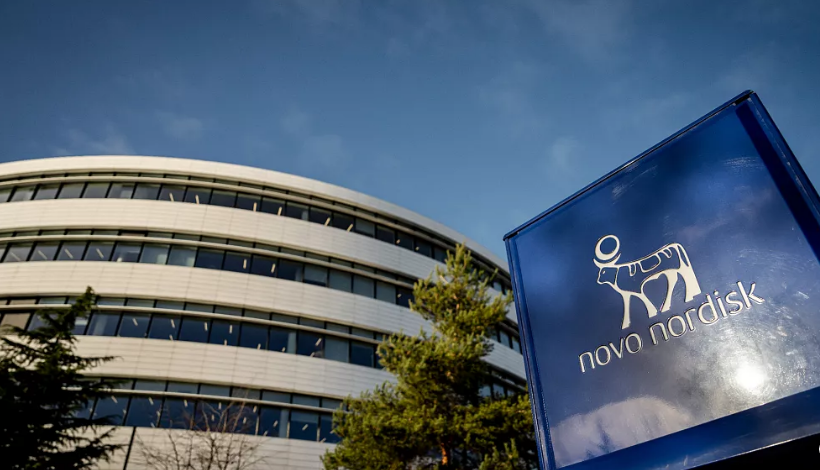Business
Saudi Arabia: Foreign Direct Investment Rises by 5.6% in Q1

Riyadh, June 30, 2024 – Saudi Arabia witnessed a notable surge in foreign direct investment (FDI) during the first quarter of 2024. According to government data released on Sunday, net inflows of FDI increased by 5.6 percent, reaching an impressive 9.5 billion riyals (approximately $2.53 billion).
Key Highlights:
- Inflows Rise: Incoming FDI flows experienced a positive trajectory, growing by 0.6 percent to reach 17 billion riyals in the first three months of 2024 compared to the same period last year.
- Outflows Decline: Concurrently, outgoing FDI flows decreased by 5.1 percent, totaling approximately 7.5 billion riyals. This reduction reflects a strategic shift in investment patterns.
- Aramco’s Impact: Earlier this month, foreign investors demonstrated strong interest in Saudi Arabia’s market. During Aramco’s second offering, they purchased over half of the shares, contributing to a total valuation of $11.2 billion.
Saudi Arabia continues to attract global investors, bolstering its economic diversification efforts and reinforcing its position as a key player in the region. The upward trend in FDI bodes well for the Kingdom’s long-term growth prospects.
Business
Novo Nordisk Shares Rise Despite 2025 Outlook Downgrade Amid Weight-Loss Drug Market Pressures

Shares in Novo Nordisk surged on Wednesday after the Danish pharmaceutical giant posted stronger-than-expected first-quarter earnings, even as it lowered its growth outlook for 2025 due to mounting competition in the weight-loss drug market.
The company, best known for its diabetes and obesity treatments, reported a 20% year-on-year rise in net profit to 38.8 billion Danish kroner (€5.2 billion), with net sales up 18% to 78.1 billion kroner (€10.5 billion). Both figures exceeded analyst expectations, driven by robust demand for obesity and diabetes medications.
Despite the upbeat results, Novo Nordisk cut its full-year guidance. The firm now expects 2025 sales growth of 13–21%, down from its earlier projection, and operating profit growth between 16–24% at constant exchange rates—both lowered by several percentage points.
“We have reduced our full-year outlook due to lower-than-planned branded GLP-1 penetration, which is impacted by the rapid expansion of compounding in the US,” CEO Lars Fruergaard Jørgensen said in a statement. “We are actively focused on preventing unlawful and unsafe compounding and on efforts to expand patient access to our GLP-1 treatments.”
Still, shares rose 4.4% at the opening of European trading, though the stock remains down 26% since the start of the year. In contrast, main U.S. competitor Eli Lilly has seen a more stable stock performance in 2025.
A key pressure point for Novo Nordisk is the U.S. market, where demand for GLP-1-based weight-loss treatments like Wegovy has outpaced supply. Under FDA policy, compounding pharmacies were permitted to produce alternative versions of drugs in short supply, allowing smaller rivals to offer cheaper options. Although the FDA declared shortages over earlier this year, it granted a grace period until May 22 for compounded versions to remain in circulation.
In response, Novo Nordisk slashed Wegovy’s price by more than half on its online platform, NovoCare, mirroring similar price cuts by Eli Lilly.
In its outlook, Novo Nordisk highlighted the continued global rollout of Wegovy, noting there are an estimated one billion people living with obesity worldwide, yet only a fraction are receiving treatment. CFO Karsten Munk Knudsen said he expects Wegovy sales to pick up further in the third quarter.
Meanwhile, the company announced the completion of its REDEFINE 2 trial for its next-generation drug, CagriSema, which showed a 15.7% weight reduction. While the results fell short of the 25% reduction some had hoped for, Novo Nordisk aims to file for regulatory approval early next year.
The company also said it has filed for U.S. approval of a new oral formulation of semaglutide, which could become the first oral GLP-1 drug for obesity treatment.
Despite market headwinds, Novo Nordisk remains optimistic about future growth in a highly competitive but fast-expanding global obesity market.
Business
European Countries Compete to Attract Wealthy Expats with Tax Perks Amid Budget Pressures

As European governments face mounting budgetary pressures from slow economic growth, aging populations, and increased defense spending, many are turning to a new source of relief: wealthy foreigners. In a bid to boost investment and tax revenues, several countries are rolling out attractive fiscal incentives designed to lure high-net-worth individuals to their shores.
Italy: A Flat Tax for the Ultra-Wealthy
Italy remains a popular destination, not only for its rich culture and Mediterranean climate, but also for its lucrative flat tax regime. Under this program, foreign residents can opt to pay a flat annual tax of €200,000 on all income earned abroad, regardless of the amount. The incentive is available for up to 15 years and targets individuals who haven’t lived in Italy for at least nine of the last ten years.
“This system eliminates the need for complex tax planning,” said tax advisor David Lesperance, noting that some wealthy individuals see the lump sum as equivalent to what they already spend annually on accounting fees.
Switzerland: Expense-Based Taxation
Switzerland offers a similar scheme, known as the forfait fiscal, which calculates tax based on an individual’s living expenses rather than income. Though only a small portion of taxpayers qualify, those eligible — typically wealthy foreigners with no Swiss business activities — can benefit from lower effective tax rates. Minimum thresholds apply, such as tax based on at least seven times annual rent or CHF 429,100 (€455,000), whichever is higher.
Portugal: A Revised Regime with Limits
Portugal’s tax benefits for expats have stirred domestic controversy, especially amid rising living costs. After criticism and international pressure, the country has revamped its Non-Habitual Residence program. The new version, NHR 2.0, grants a 20% income tax rate to highly qualified professionals for 10 years but excludes foreign pensions, which are now taxed at standard rates.
Shell Companies and Loopholes
The use of shell companies remains a common tactic for the wealthy to minimize taxes. By routing personal income through corporate entities, individuals can shelter wealth in jurisdictions with low corporate tax rates — such as Hungary (9%), Bulgaria (10%), and Ireland (12.5%). While more than 140 countries have agreed to a 15% global minimum tax on large corporations, its implementation is still ongoing.
Balancing Benefits and Backlash
Experts caution that tax planning is complex and must consider broader fiscal factors including inheritance, wealth, and capital gains taxes. While tax incentives can boost property markets and local spending, they also raise questions about fairness and long-term sustainability.
“Countries wouldn’t offer these perks if they didn’t believe the benefits outweighed the costs,” said Jason Porter of Blevins Franks Financial Management. “But the political debate over these trade-offs is far from over.”
Business
Ford Withdraws 2025 Outlook Amid Tariff Uncertainty, Braces for $1.5 Billion Hit

Ford Motor Co. has pulled its full-year financial forecast and warned of a potential $1.5 billion (€1.39 billion) blow to its profits this year due to escalating trade tariffs and uncertainty surrounding U.S. trade policy.
In its first-quarter earnings report released Monday, the automaker cited unpredictable market conditions stemming from the Trump administration’s evolving tariff regime as the key reason for suspending its guidance. While Ford is less exposed than some competitors thanks to its strong U.S. manufacturing base, the company acknowledged that the threat to supply chains remains significant.
“Given the potential range of outcomes, updating full-year guidance is challenging right now,” the company said in a statement. Ford had previously projected earnings before interest and taxes between $7 billion and $8.5 billion (€6.2–7.5 billion) for 2025.
CEO Jim Farley emphasized the advantage of domestic production, noting that Ford’s U.S.-focused footprint places it in a stronger position relative to global rivals. “Automakers with the largest U.S. footprint will have a big advantage, and, boy, that is true for Ford,” Farley said during an earnings call. “But it’s too early to gauge the full impact of industry-wide supply chain disruptions.”
Chief Operating Officer Kumar Galhotra pointed to rare earth materials from China as a growing area of concern, noting that “it would take only a few parts to potentially cause some disruption to our production.”
Despite the growing challenges, Ford’s first-quarter results beat analyst expectations. Net income fell sharply to $471 million (€417 million), a drop of nearly two-thirds from $1.33 billion (€1.17 billion) a year earlier. Revenue declined by 5% to $40.7 billion (€35.9 billion), driven by planned plant shutdowns tied to new product rollouts and inventory adjustments.
The automaker’s results surpassed projections by analysts surveyed by FactSet, who had estimated quarterly revenue of $38 billion (€33.5 billion).
Ford’s relatively limited exposure to tariffs contrasts with peers such as General Motors, which last week warned of a potential $5 billion (€4.4 billion) hit from similar trade actions. Tesla and Ford, with larger U.S.-based production operations, are considered better insulated.
Still, Ford does anticipate modest price increases of 1% to 1.5% in the U.S. auto market during the second half of the year as a result of higher costs for imported cars and parts.
The company plans to provide updated financial guidance when it releases its second-quarter earnings later this year.
-

 Business12 months ago
Business12 months agoSaudi Arabia’s Model for Sustainable Aviation Practices
-

 Business12 months ago
Business12 months agoRecent Developments in Small Business Taxes
-

 Politics12 months ago
Politics12 months agoWho was Ebrahim Raisi and his status in Iranian Politics?
-

 Business10 months ago
Business10 months agoCarrectly: Revolutionizing Car Care in Chicago
-

 Technology12 months ago
Technology12 months agoComparing Apple Vision Pro and Meta Quest 3
-

 Politics12 months ago
Politics12 months agoIndonesia and Malaysia Call for Israel’s Compliance with ICJ Ruling on Gaza Offensive
-

 Technology12 months ago
Technology12 months agoRecent Developments in AI Ethics in America
-

 Sports9 months ago
Sports9 months agoKeely Hodgkinson Wins Britain’s First Athletics Gold at Paris Olympics in 800m

























